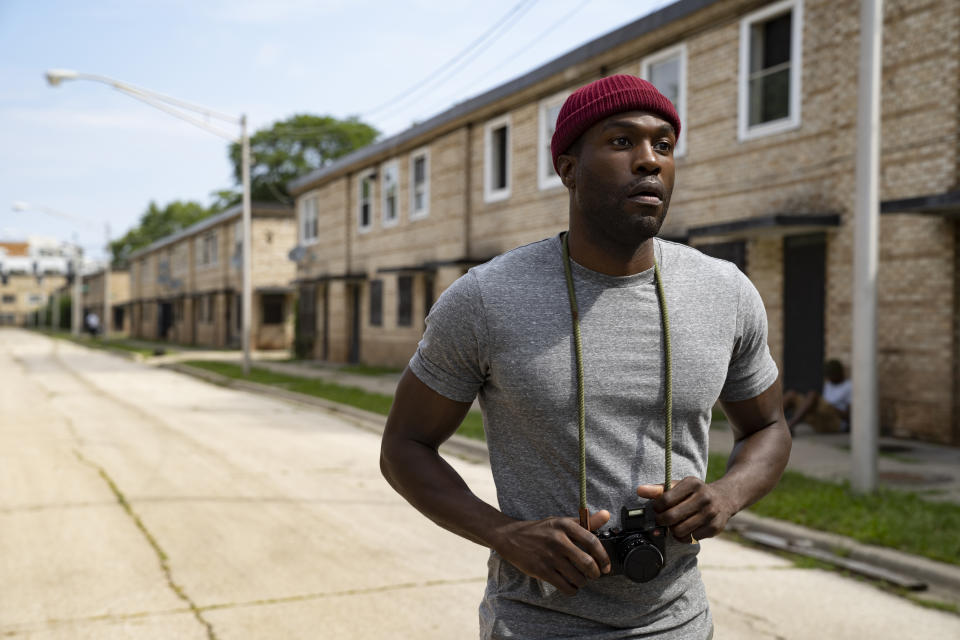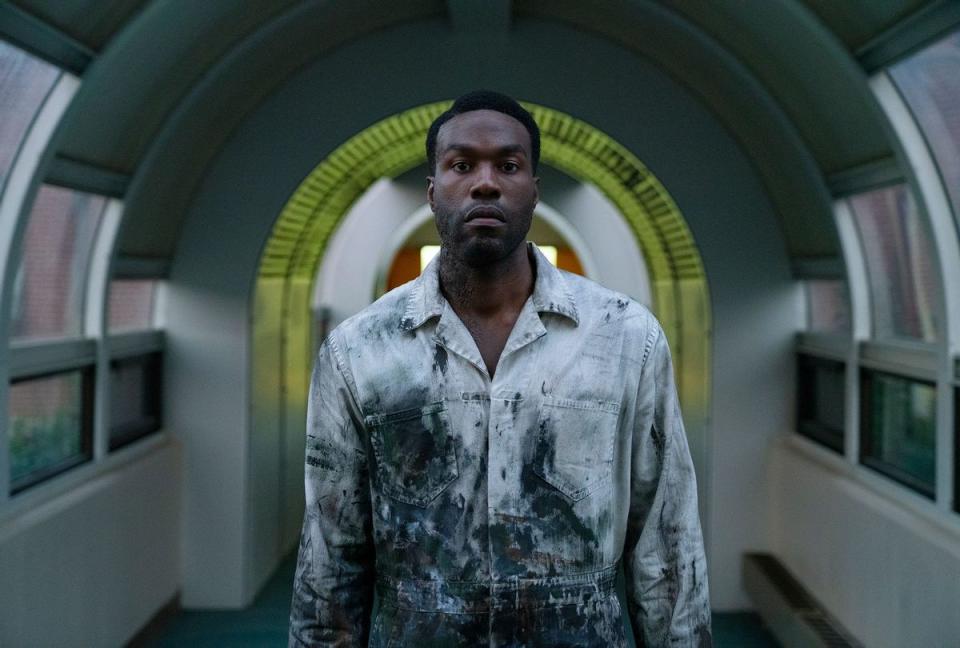The ‘Candyman’ Composer Synthesized Insects and Ghosts to Create That Disturbing Score

- Oops!Something went wrong.Please try again later.
- Oops!Something went wrong.Please try again later.
Nia DaCosta’s “Candyman” update required an unconventional score — and Black composer and co-sound designer Robert Aiki Aubrey Lowe delivered a visceral soundscape in tune with the movie’s urban legend about racist violence perpetrated against Black men throughout history.
The horrifying legacy of Black trauma continues when artist Anthony McCoy (Yahya Abdul-Mateen II) becomes obsessed with the legend of Candyman, who still haunts the gentrified community of Chicago’s Cabrini Green.
More from IndieWire
Say It 5 Times: Nia DaCosta Is the Director of 'Candyman' and She's Made Movie History
'Candyman' Grosses $22.3 Million to Become the First #1 Film Directed by a Black Woman
“The work that I created needed to live in the world of this new film, while still understanding that there was a legacy that needed to be addressed in some way [concerning Philip Glass’ iconic score to the original 1992 film],” Lowe said. He eventually carved out his own unique musical space while reimagining the Glass composition “The Music Box,” which the film uses during backstory exposition and over the end credits.

Parrish Lewis/Universal Pictures
The Candyman mythology provided plenty of inspiration for Lowe, whose unconventional process consists of recording his own voice and then processing and manipulating it to sound like a choir of strings, woodwinds, and metallic instruments. “So much of the film deals with reality and fantasy, and I wanted to create these unrealities in which you had a lot of texture and the multiplicity of voices,” he said. “These timbral choirs I made out of my own voice connect to Daniel Robitaille [the first Candyman], and where he came from: slave trade lines back to West Africa, and concepts of storytelling that address, in a nuanced way, the ancestors of these ghosts.”
The key to Lowe’s musical aesthetic is creating sounds that sit between the notes as a combination of score and sound design. After collaborating with the late composer Jóhann Jóhannsson on “Arrival” and “Sicario,” Lowe was ready for his breakout work on “Candyman.” “It’s about world building,” he said. “If I’m making a score, I want to have the sounds inside of the score be an integral part.”
With “Candyman,” Lowe started during casting and location scouting. He explored Cabrini Green, where the high rises are gone but row houses still exist, and did his own field recording. This served as the genesis of his work.
“There are a couple streets that were abandoned,” he said. “I walked through those row houses, I recorded natural sounds, sticking the field recorder inside an old electrical box, letting it record the wind beating the outside of the box, or the door to the electrical box creaking.”

Universal Pictures
Lowe said he turned those textural elements into “psychic energy” for the score. “At one point, you have the voices, the apparitions, and there are certain sounds created by voltage and electricity that are then manipulated in a way to sound almost like acoustic instruments,” he said. “Then you have acoustic instruments that are then turned on their ear, to the point where they don’t sound like a contra bass or a cello or a tanpura. I would also take some of the actors aside — Yahya, Colman [Domingo], Teyonah [Parris] — during the shoot and prompt them to say ‘Candyman,’ and then stretch, bend, and crush the word to the point where it was unintelligible.”
Lowe also recorded and manipulated the sounds of bees and other insects. Some of these sounds were natural; others were made to sound like strange recitations of the bogeyman. “A good example of this is in ‘Rows and Towers,'” he said. “It’s a choir of my voice except for the skittering and buzzing of the insects.”
To enlarge the soundscape, Lowe invited the participation of friend and collaborator Hildur Guðnadóttir, the Emmy- and Oscar-winning composer of “Chernobyl” and “Joker.” She played the cello and supplied her voice. “Our voices were paired to be complementary to my voice or strike against it in an interesting way,” he said. “I also gave her different figures to play on the cello and recorded and arranged it so that it was not necessarily recognizable as the cello. This was part of the score needing to live as a character within the film and be part of the whole landscape.”
Best of IndieWire
Sign up for Indiewire's Newsletter. For the latest news, follow us on Facebook, Twitter, and Instagram.


